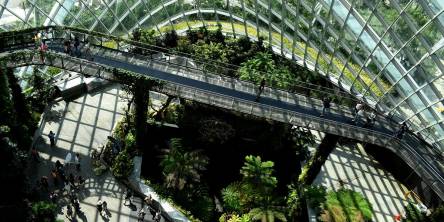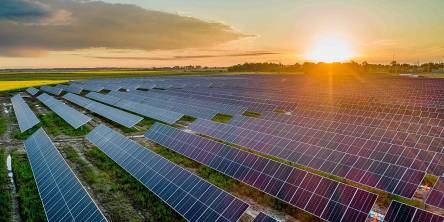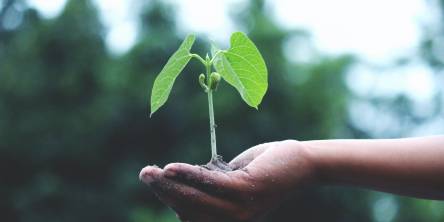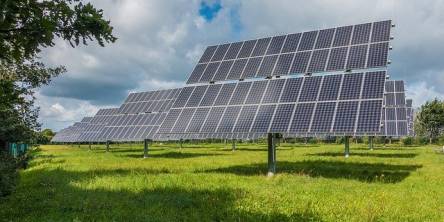5 Simple and Affordable Ways to Be Eco-Friendly

It can be easy to get overwhelmed with the many eco-friendly options thrown at you each day. Luckily, there are lots of ways you can help the environment without destroying your budget or adding to your regular workload. Here are simple and affordable eco-friendly options for you to try.
Reduce Electricity Use
This is a huge category that can not only help the environment, but it may also lower your utility bills. Start by unplugging your tech gadgets and small appliances when you aren't using them. They actually draw power just by being plugged in.
Switch to LED bulbs, which actually use about 75% less electricity than traditional incandescents. Look for other simple ways to lower your electricity usage, like turning lights off when you leave a room and deciding what you want to eat before you open the fridge. You may be pleasantly surprised at how much these little swaps can save.
If you are ready for a bigger update, consider adding solar power to your home. Using special financing options like a solar loan or lease can drastically reduce the upfront cost of equipment and installation to make them more affordable.
Change How You Get Around
Think about how much time you spend in your car alone. Be honest when you make this assessment so that you can come up with realistic strategies to reduce it. If you are fortunate enough to have a coworker who lives nearby, ask if they would be interested in carpooling with you. Even if you cut two trips per week, you will reduce the emissions produced and save money on gas and wear and tear on your car.
Carpooling isn't the only eco-friendly transportation option. Conserve trips when you can to reduce the number of times you head out. If you are shopping for a new or used car, check out hybrid and electric models available near you.
When there are public transportation options near you, take advantage of mass transit to help reduce emissions output. Of course, walking or riding a bike to run errands may be the most environmentally conscious choice if you are up for a little exercise.
Reuse and Recycle
This is really two areas for improvement, but they are closely related. Start by eliminating single-use items from your regular shopping trips. Opt for a reusable water bottle that you can fill throughout the day instead of individual plastic bottles.
Stop buying food in disposable containers that cannot be recycled, and make sure any containers that can end up in the appropriate waste bin. Glass jars can be used to store dry goods, sauces, and craft supplies.
Bring your own tote bags to the store when you go shopping. Don't limit that to the grocery store, either. Take them wherever you are likely to get a plastic bag for your purchase.
Conserve in the Kitchen
The kitchen is a prime area for conservation. Start with your general habits before adding in big changes. If you are reheating something, use the microwave or toaster oven. In fact, countertop ovens can be used to cook smaller servings of dishes that you would normally cook in a range. This can save a significant amount of energy since they are easier to heat up.
Try to plan your meals for the week so that you can maximize ingredients. This way you don't end up with a bunch of leftovers that end up in the trash. And when you do dispose of food waste, toss it in a compost pile instead of a garbage pail.
Update Your Laundry Routine
Your laundry is probably one of the biggest resource users in the house. Switch your washing machine's temperature setting to cold to drastically reduce electricity consumption. Wash larger loads or use a load size selector for smaller ones to help reduce the amount of water used to fill the tub.
When it comes to drying, consider using a clothesline for heavy clothing and bedding items instead of the dryer. It is gentler on the fabrics and the sun offers some natural antibacterial protection.
As you can see, there are plenty of simple steps you can take to make your home more eco-friendly. Start small and work your way to bigger changes as you start to notice the benefits of your new, more mindful routine.
Similar Articles
The world is rapidly developing, and the energy sector is in the middle of all these changes. For many years, individuals's homes, vehicles, and industries relied on oil and gas, but now, the shift is toward a green economy.
Discover efficient waste management solutions with advanced compaction technology, reducing costs, environmental impact, and boosting sustainability.
In a world increasingly attuned to environmental sustainability, the funeral industry is embracing practices that align with eco-conscious values. Eco-friendly funerals, or green funerals, are becoming a popular choice for those who wish to honor their loved ones while minimizing environmental impact.
In the last few years, more inclination has been observed towards a sustainable and environmentally responsible way of life. Many factors are driving this trend, some of which are as follows.
Water beads are non-edible colorful tiny balls that are made by a combination of water, acrylic acid, sodium hydroxide, and a water-absorbent polymer. They are extremely relaxing, soft, and small, roughly the size of a blueberry.
Many people are installing solar panels on their property to provide electricity. Doing so may improve your environmental footprint and could also lower your utility bills
Climate change is a global issue. Global warming isn't just down to other people's efforts. It is down to all of us. There are steps that we can take to slow it down somewhat. However, it will require an equally remarkable attempt by each of us. If we have any hope of combating what may well be humanity's greatest challenge yet.
Today, several people talk about going green, using organic food, and rejecting plastics, but very few do so. Practical implementation of these ideas is more crucial than its verbal acquaintance
The sun is not just a light source; it is also a significant source of energy. Also known as ‘clean energy’ or ‘renewable energy’ this energy has no adverse effects on the environment.









